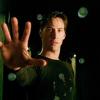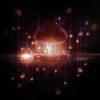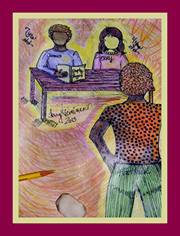Search the Community
Showing results for 'Dream'.
Found 7,590 results
-
One Small Town's Battle Against China-Mart By Ted Twietmeyer [email protected] 5-5-6 NOT IN MY TOWN? One year ago, I wrote two articles here on rense.com which were based on an MSNBC investigation of Wal-Mart's business. Incredibly, even MSNBC did an honest documentary even though everyone I spoke to never watched it. Perhaps to most people, they think these documentaries are like watching CSPAN. The articles last year covered how they used various techniques to expand their chain and how bad they treat their employees. [1] One may think that a Wal-Mart story is a local matter. Before you dismiss this, be assured that this same drama you are about to read about can be, and will be most likely will be, repeated in your town if it hasn't happened already. Like standing out in a golf course holding up a 10ft. metal pole during every thunderstorm, sooner or later Wal-Mart takeover lightning will strike a town near you. And indeed, it just has here. That cursed town-killing big-black-box store chain is planning on buying up a 56 acre parcel of prime farm land, about 15 minutes away from me. The town of Lima, NY has numerous frowning yellow smiley faces standing on many of the front lawns up and down Main St. in the town, protesting the takeover attempt. Frowning smiley face like those on front lawns on Main St. (courtesy of Google images) Tonight there was a town board meeting - and I am eternally sorry I didn't bring a camcorder. I figured I'd see a small room in the basement with a handful of people. Was I ever wrong! This meeting was held in a local mega-church which was almost filled to capacity. About 1,000 people were there, along with at least three local television stations and the R News Network. On past television documentaries, we have been led to believe that only handful of people get upset when the ChinaMart store attempts to move into a town. Often the protesters are portrayed as standing outside with placards like striking auto-workers. Not this time. Several spokespeople were there, though none were from ChinaMart. One can be certain that the store's "intelligence agents" were out there in the audience. There were some present taking notes like mad, and they left half-way through the meeting. When millions of corporate dollars are at stake, no company on earth would miss this. PRESENTATIONS There was a powerful, fact-filled presentation based upon the real facts that go with accepting the big-black-box into a town. I'll summarize some of the high points here: * The store receives 10 YEARS of tax breaks in any town it goes into, which almost always requires a zoning law variance * Store does NOT pay for added infrastructure into the community, such as increased fire and police protection * Most small Businesses DIE soon after the store is opened. It has a serious impact on grocery stores, florist shops, hardware stores, gift shops, pharmacies and more * Taxpayers must pay for additional road maintenance and repairs caused by increased traffic * School taxes RISE and business and home property values DROP. Would you buy a home beside a ChinaMart or within eye-shot if you were moving out into the country? * The store's con-men state that "480 new jobs will be created." But in reality, history has shown they may only create 70 new jobs. * Only 8% of the store's revenue benefits the local economy * Communities lose more jobs as all the local businesses die, with a typical net increase of just EIGHT $9.80 per hour jobs with little or no real benefits. In fact, most store employees receive public assistance for health care since their salaries are BELOW the poverty level and they cannot afford health insurance premiums. * If the store FAILS to generate the anticipated revenue, it will be closed. By that time, the town already stripped of it's important small businesses and their tax revenue - leaving a big, ugly empty big-box store that no one will ever buy or rent. Does any startup business need 500,000 square feet? The town's tax revenue base is destroyed, and Main St. becomes desolate with boarded-up storefronts. And the chain moves on to wreck yet another small town. My comment: Whether or not the store closes in the future, the small businesses destroyed won't be restored. Most of small town America's successful family-owned small businesses were created decades ago. That was when the average CITIZEN could realize the dream of owning their own business and doing well at it. Today, startup capital to begin any business (especially in manufacturing) is almost non-existent. And it's well know among entrepeneurs, that banks only loan money to people that really don't need it. But wait - this big-black-box story is about to get even more interesting.... TOWN BOARD CORRUPTION BY WAL-MART? It appears that perhaps the one person that could be behind disolving the town's Master Plan planning board may be the town's attorney, although it wasn't specifically stated. And here's why - it was announced in this same meeting that this attorney has "stepped out of the decision-making process because of his past ties to Wal-Mart" according to the board's chairman. Is it also a coincidence that the store wants to come to this town? WHAT THE PEOPLE HAD TO SAY The last segment of the meeting allowed anyone to come up to the stage and speak for a few minutes. I live in a nearby small town, and I didn't want to take precious time away from those who are impacted by this incursion. My purpose there was to see what actually unfolds at one of these meetings, first-hand. Most of the people who spoke had brilliant, well thought out remarks. No stone was left unturned and I salute them for it. The town's Master Plan planning board was working for 7 years on a Master Plan for residential and business development. One woman who spoke which lives in the town, announced the dissolution of the town's Master Planning Board. Everyone was shocked, in disbelief and quite upset. Hundreds yelled out demanding answers with "Why? WHAT? HOW COME?" The entire town knew that countless hours were spent on creating that plan. The board chairman then literally yelled over the sound system "now calm down, I'll explain. We're going to hire a consulting firm to review the 7 years of work." Another woman then yelled out, "is that going to be a local firm?" He wouldn't answer her, and everyone knew what that meant. She asked again and the people demanded an explanation. The zero-tolerance chairman then threatened, "I'll close this meeting right now if you don't keep quiet." Incredibly, some people clapped at that threatening remark. Apparently some enjoy that warm, cozy feeling that only a high-voltage shock from a cattle prod can give. Is it a coincidence that 7 years of planning work was just tossed out like last week's milk? It doesn't appear to be that way -especially that now is the time for board members to make a decision. All the surrounding towns already have plans in place to prevent this kind of corporate takeover. Someone should be watching all the board member's bank accounts for large deposits, and their yards for new pools, SUVs and RVs. Several residents looked right at the board only a few feet away on stage and called dissolving the Master Planning board "criminal." Many testified of the damage the store would do to their property values. The lost property equity could never be recovered, even if the store were to close. Many others could easily see a sharp increase in property and school taxes, as the multi-billion dollar store chain will receive 10 YEARS of tax breaks. TEN YEARS! Only one person talked about how "wonderful it would be to have the store in Lima." She was repeatedly booed by everyone. Another man spoke, and closed his remarks with "we have found the weapons of mass destruction, and it is Wal-Mart." Many who spoke received standing ovations accompanied by a deafening applause. Another lady however, had it all thought out. She proclaimed to the board, "if you approve this, then there is no reason to give them a tax break. You should tax them at the HIGHEST possible rate." That created a loud applause. Testimony went on into the late evening, with many voicing their concerns over the many negative factors associated with this attempt at a corporate takeover. One man noted that the land is a protected area under NY State Dept. of Environmental Conservations regulations because of streams and creeks in the immediate area, and cited the law chapter and verse. Of course, if you or I wanted to build a home on any protected land, we would never receive a building permit. In THREE different directions from the town of Lima, NY, there is already a ChinaMart and two of them are "super-centers." Each one is only about 10 to 15 minutes away from where the new store will be. Will Mars have one on it, too? THE BATTLE ISN'T OVER YET This coming week, the big box chain will have their 15 minutes of fame at a local country club (tonight's meeting was held in a very large church.) I'm planning on attending, if they allow my trouble-making self past their sentries. I will attempt to obtain some digital footage of the big store's BS session. I'm willing to bet they will be serving "refreshments" to butter everyone up, complete with Sam's club aspartame-laced diet soda. Perhaps my wife should be home to receive my one phone call when they haul me away. I'm one of those weird people that doesn't carry a cell phone - I've read the research reports and know what RF does to people. This isn't just about a small town's battle - it's a battle that will come to everyone's door sooner or later. The chain has big plans to cram one of these small town killing stores into almost every town in America, whether they want it there or not. If the US is taken to condition red and rationing is started - would not the military step in and take over the biggest national store chain for their own purposes? They already have the distribution system in place. There is also a special section in the mile-square headquarters of the chain, which is off-limits to most employees. The sign says "Homeland Security." Is it any wonder that they will try to put one of these stores in every town - just for that terrible day? For more about saving small businesses see [2]. Film at 11... Ted Twietmeyer Please help support the ground-breaking work of www.data4science.net by buying your copy online of the book with more than 160 images, "What NASA Isn't Telling You About Mars" at www.bookonmars.info [1] Article links to documented stories about Wal-Mart: Part 1 - http://www.rense.com/general65/lips.htm Part 2 - http://www.rense.com/general65/mart.htm [2] - http://www.newrules.org/retail/
-

Tips and Advice for Avoiding Sleep Paralysis
doc benway replied to MooNiNite's topic in General Discussion
Sleep paralysis is associated with drug and alcohol use and physical and mental exhaustion - anything that interferes with a natural sleep cycle. I used to experience this fairly frequently. I found that a regular meditation practice helped it to happen much less frequently. Ever since beginning to practice dream yoga, I sleep and dream better than ever and find it to be very rare. -
Oh, pardon me, i wasn’t saying you were comparing to or with christianity. I meant that all that struggle you went through is still affecting you a lot from what i can gather, even though you managed to, figuratively, come ashore from being shipwrecked you’re still holding on to the struggle of it all, the lonelyness and pain and anger. It’s a great floatation device but unless you’re going swimming you don’t need it at the moment. Presumptuous of me to speak like this but it thought, hey, what the hell, lemme stay true to what i percieve and offer it, should it be wrong or of no use to you then lets chuck it in the bin. On a note of clarification: Daoism isn’t a religion as most of people who have grown up in a culture where abrahamitic religions have or had significant influence culturally. It’s far too vast and unruly to be of such a unified structure. Daoism is hard to pin down but consider it more of a collection of knowledge and practice of use to those who wish to navigate our surroundings in a sustainable and honest way. No self respecting daoist would dream of convincing you to abandon your viewpoint for theirs as it is, iirc, considered a violence towards both your and their true nature. Any words spoken here on the subject of your viewpoints or ideas being this or that is only a way to convince you that there is so much more you can see and experience for yourself. Practices are well defined, especially at first, but most of all it’s like a lot of life-skills and instruments to deal with things as efficiently as possible without violating their suchness or interconnectedness. The Dao gives zero shits about anyone, it’s for us to try to either follow it to our advantage or oppose it to our detriment. Nobody (worth spending time with imo at least) gives an equal amount of shits of wether you agree with them or not, a daoist do however care about seeing you be the most you and thriving that way, but will only speak to it if they think you need the words or if they deem your relationship suitable to develop and share certain ideas and practices. The only opinion you need is your own. LaoZi is very clear about this. Zhuang Zi also. As far as proselytizers, zealots and charlatans Daoism is full of those to the same extent as the general human population is.
- 41 replies
-
- 4
-

-

-
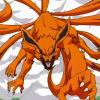
you want to control this reality ? anchor yourself
nine tailed fox replied to nine tailed fox's topic in General Discussion
i forgot to add one thing never try to seek the truth with the intention of gaining control over anything quite the irony thats why enlightened people dont have any interest in controlling anything because there is nothing to control its like what do you get by controlling your dream ? nothing really , just some fun but thats the case when you know its a dream, when you are lucid dreaming when you dont know that its a dream, you wanna control everything -
Hi, this is my last time here, so I would like to thank so many of you guys. This forum was incredibly useful and entertaining to visit. Especially thanks to such people as @Aetherous, @Wu Ming Jen @Spotless @dawei @steve @thelerner @Starjumper . I have learned quite a lot especially through your posts so kudos. I really appreciate you and your insights. So thank you and best of luck. As for reasons to leave, well the buddhist forum here is quite a ... well. Let's say it is quite hard to visit it as it unfortunately takes a bit too much patience to see the attitudes of some towards something I hold as close to my heart as buddhadharma. Well, this is here to appreciate and celebrate so thank you guys and hope to see you in another dream, or day who the hell knows. Bye!
-

Family Narcissism and Emotional Wounds
rideforever replied to rideforever's topic in General Discussion
But when you don't hurry, what happens ? Isn't there money worry ? I don't mind not hurrying personally, but then what ? Emptiness. We are busy doing, and dream of not doing, but is that really the answer ? Well what manner of not doing ? Perhaps we are simply looking to be simple kind honest straight, and live and work in that way as well. In other words just be normal and live in a normal world. Can we sit in the emptiness of meditation all day ? It's too one sided, there is a natural rhythm of things, a day and night, that feels good. There are natural processes, coming together, and then apart again, that feels right. Not hurrying, we can relax. But if we wish there is more, because in the cessation there is a lot. Life is not really normal at all, nor is it simple. It is deafening, and particular in its deafening. There are many things. It would be nice to explore, but there is always the money question hanging over our heads, or the health question, never a moments rest. And then the way our society advertises rest is also wrong. Rhythm, the correct rhythm, day and night, work and play, 40 minute sessions, eating at the right time, sleeping for the right time, the rhythm. -
You know, in lucid dream that you can control the dream. This monster came out of blue to chase me. I just couldn't change it. I couldn't run away from him. He chased me out of my dream. :-(
-
Rigpa is the luminosity of the mind...light. When you see light within your mind, you know what Rigpa is. Light and luminosity aren't metaphors but an actual manifestation of the mind..the nature and the reality of the mind. I read the dream yoga book and with rigpa would only appear in the "clear light dream." I am going through the book Natural Perfection by Longchenpa right now.
-
When I was little I used to have a lot of nightmares. In one dream I went lucid when the bad guy almost killed me and I time traveled to the moment before and went outside the house. Outside I saw lots of grass and something running through it. It looked like a dog and had red eyes, the description fit the nightmare dogs that they say live all over Europe and probably where I lived. It attacked me and made me wake up, since then I had only nightmarish dogs in my dreams. They all had weird legs, kinda like this: I would get chased, bitten and jumped. Always had them around in my dreams and still do. Sometimes I would be running away with some other kids and one night we saw one of these dogs sitting somewhere chained. Other kids were very freaked out and I had a strange idea of walking up to it and petting it. It was very scary but I still went. I petted the dog and said that it was OK but the other kids were still scared and I woke up. Since then I would rarely have nightmares in a traditional sense. The dogs would come back and be very very scary but they were my friends now. In one dream the whole neighborhood was abandoned because everyone was afraid of wolves. I was walking around and a wolf saw me, so I ran. It chased me and some other wolves joined the chase. Then I saw something that looked like a safe place, I thought that I was safe but the wolves ran ahead of me and I was scared that they would get me... but they were just playing with me, even though I was running because they scared me lol. In another dream a huge dog jumped me and I fought it. When I thought I won, it turned into an injured person and said, "Come closer, I have to tell you something" when I did so, he turned back into a dog and with a horrifying bark like voice said, "It's morning time to wake up" I would also sometimes see a dog chase some kids around but they never hurt me, they felt like an entity too and they kept away nightmares from me this whole time. With that in mind, I don't think what you've done might have been a right thing
-
Regarding the whole "You'll stay a Ghost Immortal forever" statement. Here's the thing... NO THING IS FOREVER. "Reality" Is a Multi Level, Virtual Reality Simulation. The ancients didn't have Oculus Rift, so they used different nomenclature to describe the same thing. The creator, prime mover, and foundation of this simulation, is Consciousness (Which Is Immaterial= NoThing/Not Matter). I don't know If It's a translation Issue or what, but a lot of times, when various texts say "consciousness", what they're actually talking about Is the personality, the self Image. What most folks think of as "me". This is the false self, and not "The Real You". People are avatars/game characters In this simulation. The core Self of these characters Is Consciousness. What they normally think of as "Me" Is a mental construct. Their "Mind" Isn't even In the body, It's non-local. The brain is just a receiver. It Isn't the mind. We are NEVER "IN" the Body. A MAJOR misunderstanding/Error In a number of current systems. Like every "thing", bodies are mental constructs. Limited, finite, conditioned structures that consciousness utilizes as focal points. Most of the writers of these alchemical texts were aware of this. This is one of the "traps" I talked about previously. Intentionally set for folks not paying attention to what's being said. Western Science actually figured this out In the early part of the 20th century. And It disturbed the hell out of them. So they say,"quantum mechanics Is weird", and left It at that. If you "Wake Up" to this reality, you can then function as the core Self. You can then travel through all of the various levels of the simulation, with full Self Awareness. Call It what you will: "Rainbow Body", "Diamond Body", "The Body of Ausar (Osiris)", "Atman", "Metatron", "Adam Kadmon", etc. Just different models for the same thing. But these levels aren't forever. Your various personas/self images aren't forever. The only forever Is "I". So you wouldn't stay a ghost Immortal forever. That's just silly. You don't stay any thing forever. We're affected by these various states, to the extent that we stay attached to the human self Image. A "Ghost" Is what In Ancient Egypt was known as the "Khaibit". Just the Qi/breath/vapor/plasma that moves our vehicle, with some remnant memories (If you hadn't "awaken" before you transition (aka Death), you eventually lose your memories/personality, "Dying The Second Death". If "you" get a chance to Incarnate again, you don't remember any of this. It's like waking from a dream. People with more energy do remember previous lives, vividly In fact, and there are many documented accounts In various cultures throughout the world. The various "Immortal" levels, are just various levels of wakefulness. A Ghost Immortal could stay that way for 10 months, or 10 years, relative to our reference of time (which people have to remember, Is different on the different levels of existence). "Forever" Is relative. 100 years to you, Is 1 nanosecond for some other being. Wiki Powers ACTIVATE!... "Anicca or impermanence is understood by Buddhists as one of the three marks of existence, the others being dukkha (unsatisfactoriness) and anatta (non-selfhood). All things in the universe are understood by Buddhists to be characterised by these three marks of existence. According to the impermanence doctrine, human life embodies this flux in the aging process, the cycle of birth and rebirth (samsara), and in any experience of loss. This is applicable to all beings and their environs including devas (mortal gods). The Buddha taught that because conditioned phenomena are impermanent, attachment to them becomes the cause for future suffering (dukkha)." Sometimes, even the writers of these wonderful texts forget the basics. Every Thing Ends. It may take 10 seconds, or 10 Million Eons to do so, but It does. All great stories end. And then "you" aka "I" create a NEW one. Because I, Consciousness, NEVER End. We are all Incredibly blessed to even be having this conversation. To even know about these realities. 99.9% of the people on this planet don't. So most of them will lose consciousness, and wake up as yet another persona, probably the slave of another man, In whatever new dream reality the people In power In their world create. I just dealt with a friend's mother transitioning. They began showing up In my friend, and her daughter's dreams (Theta brain wave state Is the location of the "Bardo", "Duat", "Heaven", "Hell", etc.), saying It was cold, dark, and that they needed help. She transitioned In an upset state, according to readings that I did. But she's got to go through that now. Her belief system didn't show her what she needed to do In life, to avoid this. And she's going to have to lose consciousness because of It, and forget her life. Don't let that be YOU. I know I'm not. Just do the work to wake up. Build up to 3 to 4 hours of practice (both movement, and stillness work) 365 days a year, for 10 years, or so, (your mileage will vary), and You'll find out the details yourself directly, If you do. Everything else is just opinion, belief, and egoistic posturing, thus useless. Cheers!
-
What if you have no teachers and your kundalini energy experience is very sudden? Here, I think, you must have faith in yourself and to have faith that you would and could do good. Once the energy completes its circuit, your mind becomes very open. You would see gods and spirit beings. Hopefully, due to your merit of your past lives, you would receive guidance from benevolent beings. For examples, in my immediate past life, I was a soldier and I even witnessed myself being killed by a sniper bullet. Here, in one my nightly dream/vision episodes, I had a version of a young man radiated with golden light. He looks like me or I look like him, except the hair and eye colors. He appeared by my bedside as if he was there. He was passing on wisdom to me by allowing me to confront various life conditions. I woke up and freaked out and expected this young man was next to me!!! That was how real it was. I never dream or have visions of myself killing anyone though. There was some hint that I took a life because I saw my hands with blood at one time, in my dream. But the desire to kill and to hurt were never there at all.
-
I used to lucid dream a lot some years ago. The best technique I found was to meditate before sleep. To fall asleep while in meditation. That made it a lot easier to stay aware in the transition between waking and sleeping and actually wake up within the dream. I had so many lucid dreams doing whatever I wanted. Sex, flying, changing and manipulating the dream in any way I wanted. It got boring after a while and I started just being lucid but observing the dream and its natural progression. I believe Ken Wilber calls this Pellucid dreaming. After a while with pellucid dreaming and not bothering with doing anything with the dream other than observing, I came pretty much back to normal dreaming with lucid dreams only occationally. But to meditate and fall asleep while in a meditative state has been the best technique Ive used for lucid dreaming. In addition to the other techiques mentioned here ofcource.
-
Existance has always been a dream we're having. That doesn't make it any less real.
-
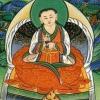
Buddhaguptanatha and the Late Survival of the Siddha Tradition in India
RongzomFan posted a topic in Buddhist Textual Studies
http://undumbara.wordpress.com/2009/05/07/buddhaguptanatha-and-the-late-survival-of-the-siddha-tradition-in-india-d-templeman/ Buddhaguptanatha and the Late Survival of the Siddha Tradition in India by David Templeman The late survival of the siddha tradition in India might come as a surprise to some. It is commonly believed that Buddhism was totally eradicated by the end of the 12th century and that nothing of its religious traditions survived in the Indian sub-continent. However, there is an increasing body of evidence to show that this was not the case. In certain areas, Buddhism survived, in fact, at least into the 17th century. This article focuses on the life of one such ‘survivor,’ Buddhaguptanatha, a siddha-yogi who wandered widely and eventually taught Taranatha, Tibet’s greatest historian. In terms of his wanderings Buddhaguptanatha was remarkable. He travelled on foot to Iran, Balkh in the north of Afghanistan, Kashgar in Central Asia, Multan, Kabul, Khorasan, Badakshan, Qusht and the lands of the Mughals. He travelled by boat to south-east Asia, particularly Indonesia, parts of Burma and possibly Thailand. It is even believed that he reached Madagascar off the coast of east Africa. In terms of late Indian siddhas such as Buddhaguptanatha, there is very little extant literature or surviving knowledge. The text that I am basing this article on is by the Tibetan historian Taranatha (1575-?), who wrote one of the few existing biographies of such people. Buddhaguptanatha earned more renown as a siddha than anyone else in his era, precisely because of his relationship with Taranatha. He transmitted the dense details about Buddhist history and recent tantric developments that enrich so much of Taranatha’s texts. Buddhaguptanatha demands our attention for several reasons. His observations are vital in the work of reconstructing the late Buddhist geography of India and its neighbor. It is equally valuable for the data it gives on the types of Buddhist practice that flourished in parts of the Indian world to the late 16th and early 17th centuries. The genre into which this work fits is known as hagiography. Hagiography is a kind of spiritual biography that celebrates the inner journey of the guru. Throughout his other written texts, which dealt with India, yogic practices, other siddhas’ lives, Taranatha always says, ‘My guru told me… my guru said this… my guru’s view is at variance with the previous teacher.’ Taranatha is often at odds with Buton Rinpoche, the 14th century scholar of Tibet who is referred to by the title kun khyen (kun-mkhyen) or ‘omniscient.’ Taranatha frequently dismisses Buton’s views with the phrase, ‘my teacher said differently and I believe him.’ Clearly Buddhaguptanatha is a seminal figure in the reconstruction of late Indian Buddhism and his influence on the course of Tibetan understanding of it is unique. He could equally well have been noted as a geographer. Taranatha’s work could have been categorised as one of the wonderful Tibetan works that springs up very late as ‘geographical curiosities’ or ‘curiosities of the outer world.’ By this stage – the early 17th century – Tibetans were beginning to return to India for the first time since the great cultural transmigration of 8th to 9th and then 12th to 13th centuries. When the Tibetans did start returning to India, they were absolutely astounded by what they saw, and recorded their impressions in a kind of ‘literature of wonder and amazement.’ Unlike other writers who travelled to British India, such as Jigme Lingpa who actually describes quite accurately the secular world and its wonders – such as a barrel organ or a twenty-five gun sailing vessel moored in Calcutta – Buddhaguptanatha is impressed at only the Buddhist things in India. He records them with amazement and gives us very Buddhistic descriptions of what he saw. In his description of Mt Potalaka, for example, Buddhaguptanatha describes in which part of India it is located and which river you might go up to get there. He then drops all pretense to facts and becomes poetically vague: And when I was there it was amazing, as if I were in a dream. I saw streams flowing from the top of Mt Potalaka and I saw Manjushri seated amidst clouds on the very peak… Therefore, while we might discover much about Buddhist India in the 16th and 17th centuries from such texts as these, we must not expect too much accuracy and detail. In order to understand who Buddhaguptanatha was, we should first look at his name. While the Buddha part tells us something about his spiritual affiliation, it is the nath part that we should discuss first. He belonged to what is known as the ‘Nath’ or ‘Gorakhnathi’ tradition of Shiva worship. Gorakhnathis are a Hindu Sannyasin sect. In 1911 there were 45,000 of them in the census of India. There are probably more than that now. It is one of the Hindu yogic sects that have found increasing favor in India. Naths tend to wear white clothing and are identified by what is called the kanphata, the split ear, with an ivory ring thrust into the lobe. Naths have a tremendous tradition of pilgrimage and of scholarship. They practise a type of Hatha Yoga which, in its externals, is similar to the Tibetan yogic tradition. The Nath understanding of the physical and psychological structure of the body is much the same as that found in Buddhist tantric practices, with its focus on the ‘moon channel,’ ‘sun channel,’ bindu drops, et cetera. Buddhaguptanatha then, started his life as a Gorakhnath yogi. As we can see from this description, his teacher was one of the ‘cultural types’ one may still find in India: His guru, Tirthanatha, had hair which grew to thirty feet in length and his beard grew to ten feet in length due to his inherent powers. Beings who met him lived in absolute amazement. The king Ramraj had doubts about the genuineness of Tirthanatha, but after he had thoroughly inspected the situation he came to believe that this was indeed a true yogi. He ornamented each one of Tirthanatha’s hairs with a pearl, and the acharya, that is my [Taranatha's] teacher, said that when each of the pearls was then taken out of his hair and they were heaped up into a huge pile, anyone who passed by was free to remove one of those pearls. Then the guru wandered off to a place where he would be happier by being less bothered by people. For the first thirty years of Buddhaguptanatha’s life, he was apprenticed to this guru, Tirthanatha. Then in his thirtieth year, while he was meditating at the Nath pilgrimage site of Rathor in Rajasthan, he had a strange vision, a vision of the Buddhist goddess Vajrayogini. This key incident is recorded very briefly in Taranatha’s biography of his master. It is almost like it is a ‘non-conversion.’ One might expect that someone who is converting from being a Nath to a Buddhist would make it some kind of focal point, but it is really not presented that way in Taranatha’s writings: At that time, when he was in Rathor in the land of Maru, after one of the king’s men had presented him with gifts, he erected a small, grass kuti hut and he set himself in one-pointed meditation. While he was in a dream the form of Vajrayogini repeatedly appeared before him and levels of super-knowledge arose in him. Then a few lines later: At other times, again and again, Vajrayogini came to him in dreams in the guise of a barmaid and she overcame all his impediments, time and time again. From then on Buddhaguptanatha seems to abandon his allegiance to Nath practice, and becomes a Buddhist. He goes to shared pilgrimage spots revered by both Buddhists and Hindus and rarely goes to exclusively Nathi pilgrimage spots. He does not castigate his previous belief system and he does not set out to dismantle it in any way. He really seems to see it as a natural stepping stone into Buddhism. Why would the process of ‘conversion’ be so gentle, so apparently smooth? It could have been because there existed a lineage within the Nath sect called the ‘Natheshvari,’ which combined Buddhist and Hindu teachings. These Natheshvaris held Buddhist lineages of instruction within their own Hindu teaching milieu and yet they remained Nath siddhas. All of Buddhaguptanatha’s three main gurus, Tirthanatha, Brahmanatha and Krishnanatha belonged to this dissident group known as the Natheshvari. These three masters taught within a recognised Buddhist tradition, a fact which might make us redefine some of our presuppositions about religious ‘exclusivity’ in India. In a sense, Buddhist and Nath yogis might have felt they were sharing, to a great extent, a common path. Perhaps it is even true to say that the community of yogis in the 17th century was more grounded in a sense of cooperation than on more specious distinctions, such as those between Buddhism and Hinduism or, even more abstrusely, into Anuttara (highest yoga) practitioner or lower-level practitioner. Certainly, right until the end of his life, Buddhaguptanatha continued to travel to the recognised pilgrimage places that were sacred to the Kanphata sect of Nath yogins. Even when he was a mature-age siddha and had practised all the major Buddhist tantras, he continued to visit pilgrimage sites of two quite clearly distinct types: Those that were specifically Buddhist, such as Sarnath, Bodhgaya, Rajagriha, et cetera. Those of dual-occupancy where the sacred spots themselves were sacred within both the Buddhist tradition and the Kanphata tradition. It is of interest that many of these ‘dual-occupancy’ sites tend to crop up again and again in the lives of other mahasiddhas and great yogis, such as Tilopa. We could suggest from the biography, that Buddhaguptanatha spent a lot more time visiting pithas or pilgrimage places, which were simply meeting places for yogis, than he did going to exclusively ‘sacred’ places of worship. Most of what he appears to do in such places is to talk and chat with other yogis; so much so that he seems to have been somewhat disinterested in philosophic discussions. Indeed, the only time Buddhaguptanatha seems to have shown any sense of exclusivity and really resented mixing with other people was when he had to mix with other Buddhists! When his travels took him to Indonesia, he makes it clear that he intensely disliked the fact that there were Hinayanists, or Theravadins, there. The text says: He went northwards and came to the land of Javadvipa, which is known in Tibetan as the ‘land of Bali.’ In that land there were many shravakas belonging to the Sendhapa order of monks. In the midst of a lake there was a small island… In that place, the acharya, Padmavajra gave his blessings. Outside was a rocky cavern, inside of which there was a square-shaped temple. In the middle of this sat a self-created stone image of the two-armed form of Hevajra. In another cave were kept many sacred tantric volumes, five hundred thousand verse tantras… If one looked at them carefully they were not in such a state of disorder as he had heard they were said to be… Clearly the monks held a sense of disrespect for the tantric teachings here and the Sendhapas – once sacristans at Bodhgaya itself – had long been antagonistic, even to the Mahayana. Buddhaguptanatha then, set out to put these texts in order. In Java, there was a tantric heritage that had been relegated to caves while the monastic order ruled the rest of the island. I believe that this led Buddhaguptanatha to feel some residual resentment towards the Sendhapas. He felt very uncomfortable staying with them in their monasteries and obeying the many rules by which monks were bound. As a siddha, he possibly felt more at ease with the life of the wanderer – sharing friendship and a sense of direct practical experience with yogis of any and all traditions – rather than with the more measured and controlled life of a monk. Taranatha gives us a wonderful description of Dumasthira (the ‘smoky place’), which was the capital city of Urgyan. Urgyan has taken on an almost mythical quality over the centuries since yogi-siddhas first ‘colonised’ it in the 4th and 5th centuries. It is the site par excellence in siddha biographies. Here, we have a wanderer visiting it in about 1580 and still discovering its magical qualities! Buddhaguptanatha locates Urgyan in Ghazni, in modern Afghanistan, which is in contrast with the traditional location of Urgyan in the Swat area. Here, Taranatha gives a detailed description of the country and Dumasthira, the focal location of the magic dakini women: [Dumasthira]… is surrounded by mountains, valleys and dense forests and it sits in the midst of all of them. Going from east to west directly, it measures about two days’ journey and from south to north is about four days. Dumasthira is the only city in Urgyan. It’s the size of a small Indian city. There are four ways that lead out of the central area and the outer lands of Urgyan are also very extensive. It is in Muslim control, and even today, in the central part, there is not the slightest vestige of the order of Buddhist monks any longer. There are, however, groups of fully renunciate yogis, upasakas [lay people] and tirthikas [Jainas], as well as the Muslims there. It appears that most of the women of this town are of the dakini family and that they are fully accomplished in their spiritual practice. They are powerful in their exercise of mantras and they know how to both help and hinder with them. They are skilled in adopting various physical forms and they have the ability to work with the mystic gaze. They displayed various magical abilities involving birds and my master, Buddhaguptanatha, saw these miracles with his very own eyes and he told me of them. He said that previously when he was in Upper Hor [Muslim territories]… he was fully protected by the mantras that he had received from those dakinis in Urgyan, as well as by his own physical powers. Urgyan is surrounded to the east, the south and the west by three large lakes. When he… crossed over the pass he came into the Hor Mleccha land of Balkh [northern central area of modern Afghanistan]. We also have a lovely description of another of Buddhaguptanatha’s wandering adventures: He wandered elsewhere… as he was doing so a certain prostitute who was washing herself inside an empty house splashed water on his head and said the words, ‘Vijnanajnanam Avarjitavivarjitam,’ which means, ‘seek after the elements of consciousness and forsake ignorance, now and in the future.’ Thereafter, he gained great confidence in this instruction which he had been vouchsafed. And he said to me [Taranatha] that this woman might not have been a prostitute but a jnana dakini, a wisdom-holding goddess. As mentioned above, there are suggestions that Buddhaguptanatha reached Madagascar. In the language of the people around that area it was called ‘Samloranzo.’ I suggest this is in fact San Lorenzo, or Sao Lorenco, which is the name Pedro Alvarez Cabral, commander of the Portugese fleet, gave to Madagascar in 1500. Taranatha records his teacher as saying that: In that place of Samloranzo, the tantric teachings have spread very widely. He heard there the empowerments for Samvara, Hevajra and the full range of teachings on Hevajra Tantra from a teacher called Sumati. Then Taranatha goes on to talk about what Buddhaguptanatha learned, and describes the monks of that area. He says many of the teachings emanating from the renowned Padmasambhava are to be discovered there in Samloranzo, but his description of them is somewhat perplexing: Although there are many monks there, they don’t seem to obey the basic Vinaya rules of Buddhism in a full or complete manner. They dress in black and they drink alcohol among other things. He stayed there for about a year. At that time his guru Sumati passed away and then he had to go elsewhere. Could his description of them and their practices be one of the earliest records of Catholic missionary activity in Madagascar in the early 17th century? He could well be referring to Jesuits he saw there, but he describes them as some sort of bizarre semi-Buddhist sect. Possibly the alcohol is a reference to the inclusion of wine at the Mass. When Buddhaguptanatha was seventy-six years old, he met the young, nearly sixteen-year-old Tibetan monk Taranatha, on one of his travels into Tibet. The story goes that Taranatha had dreams preceding this event, on the second day of the eighth Hor month (1590). Already something of a prodigy, he dreamed while in meditation retreat at Mahabodhi near Narthang, that he was encouraged to eat a piece of human flesh and that he was suffused with bliss as a consequence. He also dreamed that he was able to fly in the sky and had become a vidyadhara. The following day, the south Indian Buddhaguptanatha arrived at Mahabodhi, semi-naked and with his hair bedecked with yellow flowers. Buddhaguptanatha described his journey into Tibet to Taranatha, and the young acolyte was especially impressed with the account of all Tibet’s local spirits coming to meet the siddha and of the mountains along the way bowing their peaks towards him. Buddhaguptanatha commenced, at Taranatha’s request, to teach him all he knew. Thus began the transmission of the vast knowledge that Taranatha was to use throughout the rest of his life. After forty-six years of peregrination around India, central Asia and south-east Asia, Buddhaguptanatha brought with him to Tibet a huge awareness of the geography and history of the places he had visited in person and those that he had heard about from fellow ascetics. It is precisely these aspects that stand out in Taranatha’s writings as the cornerstones of the factual validity for which his writings are renowned. Taranatha is hailed by Tibetan and Indian scholars as the most accurate of all those who recorded the history of Buddhism in India. According to Taranatha himself, he did not simply rely on his memory to recall the facts. He wrote notes and comments on all the data that he received orally, and it is presumably from these notes and jottings that he was able to so accurately compile his later works. Works that depended completely on that very sense of detail for much of their validity. He used lists as an aid to memory, most of them apparently based on alphabetical lists and mnemonic devices. As Taranatha writes: I wrote notes, I wrote addenda lists to my notes and I ensured that these were not fragmentary or careless. Whatever teachings he gave me I wrote them all down on paper. On one memorable occasion, just before a Tara initiation, Taranatha dreamed about just how important these teachings were to him. He saw his skin peeled and stitched together to act as paper, his life’s blood becoming ink, his ribs becoming quills and his entrails and bones being used as bindings and thongs for the volumes. After a few months in Tibet, Buddhaguptanatha would not promise to stay any longer, despite Taranatha’s entreaties. There is no clear reason given for the rift between them, but there are clues to be found in Taranatha’s Secret Biography. In a dream Taranatha had at Samding, he saw a complex mandala of pandits including Aryadeva, and siddhas including Matangi. Taranatha felt that he had now ‘joined’ that lineage, at which thought a young maiden appeared from out of the mandala and told him that he still possessed a huge amount of dualistic thought and pride and thereby insulted the yogic tradition. In Taranatha’s biography of Buddhaguptanatha, it is simply said that Taranatha was told that he had too much dualistic thought and that no more teachings were to be made available to him. Even Buddhagupta’s students Nirvanasripada and Purnavajrapada, who visited some years later, refused to ‘complete’ Buddhaguptanatha’s teachings. When Taranatha requested that they do so, they left hurriedly! Another reason for Buddhaguptanatha’s eventual departure could have been simply his difficulty in remaining too close to a monastic situation, the confining nature of which he had experienced previously in Indonesia. For Buddhaguptanatha, monasticism and yogic practice did not sit well together. Taranatha records something of his master’s character with great affection. He says that he was in complete control of his psychic winds and could sit naked in the cold Tibetan highlands, warming disciples within two metres of himself. His lightness of body meant that travel through the mountains was extremely easy for him and also enabled him to fall from considerable heights without injury, as he would descend rather like a sloughed-off snakeskin. His loving attitude towards all creatures changed the normally savage Tibetan mastiff dogs into lap dogs, which would come and lick his body. So gentle was he, that crows and nestlings would come to him and sit on his lap and fingers, and even though he were to stroke them, they would not flee. Spirits provided him with food and he was never seen to partake of mortal food with his Tibetan students. It is tempting to imagine that such siddhas survived even later in India and continually added to Tibetan understandings of Buddhism with their knowledge of ‘lost’ and ‘hidden’ teachings, which had somehow miraculously survived in India. However, Buddhaguptanatha’s remarkable life should serve to remind us that Buddhism is capable of survival in any environment and under any circumstances. Its ability to survive in any situation is one of its glories and its late survival in India is testimony to this ability. -

Colors blind the eye / Sounds deafen the ear
manitou replied to manitou's topic in Daoist Discussion
Wow, Steve. Like the baby before it learns to smile. To keep in mind the dream state of our being, to know that we are predominately......nothing. To see the world before the name kicks in. Seems easy to say, impossible to do. Unless one constantly remains in Awareness of the dream. -

Sleep experience - waking and dream state mixed
Owledge replied to Owledge's topic in General Discussion
Well, in this case it definitely wasn't all a dream, because I DID turn the lights on. This night, I had another interesting dream state. Parts of my dreams were quite creative (some comedic scene and some music), and at one point I dreamt I was sitting in front of my TFT and it was flickering like hell. ... Do you know the phenomenon where when you close your eyes you have brightness pulsation in your vision? It can be explained electrochemically, but nevertheless, I had that after waking up from the TFT flicker dream. BTW the comedic scene (doesn't make complete sense, but whatever) was about a cop who got his police car stolen right from under his nose. He was talking to the police station about something and then this dialogue ensued: "Sorry, gotta stop here. Got a car-jacking." - "What type of car?" "... Eh... difficult to say." - "Can we track it?" "... Yes, I think so." The joke was that it's difficult for him to say because he's a cop and it's his police car that got stolen. -

Holy Guardian Angel
DragonsNectar69k replied to RiverSnake's topic in Esoteric and Occult Discussion
I just experienced a heart cleansing the other day in a dream. There was a being in my dream that was following my mom. A child like being with long hair and was wearing a blue robe. I was pissed off at her in the dream. I was walking around my house and she was telling me I could have whatever I wanted and then I began to ask who the frick was with her and I went into this strange state where I some times morph energy and I felt as if I was going to attack her and the being behind her. But what ended up happening was I had felt this surge of energy go threw me, solar plexuses and heart chakra as this being morphed into a vampire and my mom turned into a zombie, it was rather peculiar. I felt all this grief leave me once and for all as I woke up groaning. I remember as this cleansing or renewal was happening I became aware of this area within me again (heart charka) and it freaked me the f0ck out, so I woke up. My upper chest doesn't feel 'clogged' any more. Strangely enough, females are a lot more receptive the last couple of days. I had been praying for healing lately, I just wasnt expecting to see what I saw. -
Hi & you will relax with friends, and progress with many ideas, here., I'm familiar with lucid dreaming. It's quite a ride sneaks up like a fast locomotive, but once awake the second time in the dream, it reappears then the 3rd-4th time isn't so chaotic, can actually slow it down by knowing it is a dream and now it's a game. similar to playing hide'n'seek. Even the day dreams slow down, also. Once you recognize your the director, producer,actor in all life's events-all day-all night, there's no forcing the matter(which alan watts speaks matter to be measure)-lol. For example; 3 x this same dream repeated itself overlaying each other. I was being chased by a murderer and killed. After death occured, I appeared right where i was once again; chased and killed. chased and killed. Finally woke up and crawled out of bed, and said; 3's enough!'
-

Colors blind the eye / Sounds deafen the ear
manitou replied to manitou's topic in Daoist Discussion
Really nice, Jonesboy. This originally started out as a rumination on Chapter 12, but sort of extended into 13 as well. The operative phrase, for me, in Worldpeace's rendition, at the end of 12, is 'she chooses oneness and distinguishes nothing'. I've been practicing dream yoga lately, in that I remind myself daily, as many times as I can remember, to be aware that this is just a dream. Consequently, the optimal situation is that there is little separation between your nighttime dreams and your daily activities; they merge into one entity of sorts. This is what I was thinking of when the original thought of Ch 12 is that the 5 colors blind the eye, etc; that it is all oneness, that it is all light, and that any specific color, or sound, is merely an elimination of all quantum possibilities of everything else. Sort of looking at all of life 'bass-ackwards', but making sense in a Daoistic or Buddhist sense. I think it does chapter 12 a disservice to see it merely as a question of balance - not too much, not too little, although this is certainly an important aspect of the 3 Treasures. However, I think these interesting chapters, 11, 12, and 13 are saying a bit more. Yes, misfortune arises from being trapped in samsara, as you so eloquently say. Edit: And how do we choose oneness and distinguish nothing, in our everyday given samsara? This is tricky. I believe it is to remain in consciousness that that is the way it is; naturally, sometimes you want to pick up a Hershey bar rather than a pickle, and picking up the wrong one would be an assault to our samsaric senses. Yet, the Enlightened One would know that these are one and the same, the Hershey bar and the pickle; it is only our sense capabilities and definitions that distinguish one from the other. This is illusion, but in the case of the Hershey bar a very tasty one. What an odd tightrope we must walk, for some unknown reason, in this thing called human experience. I have a habit of 'seeing and knowing' that the black spot inside everyone's eyes is 'god'. This is my daily practice that I walk around with. The beggar on the street, the president of a country, a nun, a homicidal maniac. All just 'gods' playing out their part the best they know how. Even the homicidal maniac. Even knowing that if I had the same upbringing, the same conditioning, etc - that I may very well succumb to the same emotional motivation as the homicidal maniac and act out in the very same way. It certainly makes life easier to bear to think this way, and it is aligned with the Dao and the Sutras. It almost enables me to watch Fox News, although I'm not quite at that place of Enlightenment just yet. I've a bit more work to do before that hot stripe stops climbing up my back. But it's a good litmus test. -
Yeah Meghna -- that was quite the shock. Basically Chunyi Lin had taught to be sure not to pull energy blockages out from the top of someone else's head. I didn't mean to do this but she was old and frail and even though she couldn't see what I was doing. My hand was maybe half a foot from her and as soon as I felt this heavy electromagnetic blog get pulled out of her head I knew what had happened and at the same time she started bawling -- instantly -- no tears -- just straight up bawling. We didn't exchange any words after that and the healing session time had ended so we parted ways. As I left with my friend who had been downstairs I said to him, "you're not going to believe what just happened." Then as we walked down the hall she walked towards us -- still bawling -- with someone else comforting her with their arm around her shoulder. I saw her later on -- maybe a few months later and we just smiled at each other. As for Lazar's work -- she did respond to me which was nice but said she's just working on "breath awareness" not tummo right now. Last night I was up almost all night -- probably till 4 or so -- sitting in full-lotus, working on tummo. I generated a lot of heat and light and heard strange high pitch sounds. When I finally went to sleep I had this intense dream where I heard little children voices calling to ask for my help because they were dead spirits. I got scared in my dream and then in my sleep -- which was just like being awake -- I called on Chunyi Lin to help the dead spirit children find rest. Then I woke up and immediately went back into full-lotus with the thought: GHOST POLLUTION. I'm pretty sure that was just a dream since when I did see dead spirits my energy was much much stronger (at the end of my 8 day fast and the dead spirits were gonig to hear Chunyi Lin at his chi-emitting retreat lecture). I had heard Coast to Coast on Monday night -- a show on ghosts and had emailed them about Chunyi Lin and ghosts, so that's why I had the dream. But then it's all a type of dream except pure consciousness. Mainly I was amazed at how well the "anal breathing" worked last night -- http://www.precisiondocs.com/~altaoism/HLSbiel11025.htm So then I realized that when we visualize heat and light in the lower tan tien that's using the sympathetic nervous system -- the cortex. But when we flex the tailbone up towards the anus -- that's the parasympathetic nervous system -- which activates the thalamus-cerebellum. So then I realized that this is the secret of tummo -- that the sympathetic and parasympathetic work like a battery and that this system is activated directly through what I call "flexing the pineal gland" AND through the "anal breathing." So I did both at the same time -- reversing the normal process. Instead of focusing my sympathetic nervous system on the lower tan tien -- I flexed my tailbone up to connect the parasympathetic directly to the sympathetic of the lower tan tien. Then I also flexed my pineal gland to connect the sympathetic of the cortex to the parasympathetic of the thalamus-cerebellum. The results were instanteous -- and I realized this is just the same as a car ignition system and the primary coil is the lower tan tien and the secondary coil is the upper tan tien while the actually car-road generator is what Gurdieff calls the "Big Accumulator" -- the heart-mind.
-
I think the usefulness of a journal comes from the mindfulness and examination required to write one, more so that the "written result" i.e. the difference between just thinking "that was a cool dream I should write that down" and the act of consciously recalling/remembering, writing down, and then reflecting on the dream. As devoid said It sort of seems to make you more "involved" in the dream I tend to use journals to work through stuff, I think it helps that I enjoy typing. Sometimes I type up pages of stuff only to feel .... resolved ? and just delete the entire thing. Other times I don't feel like writing much and am happy just to contemplate. The journals rarely make any "sense" to me when I read them latter either I even have some old hand written dream journals that are just unreadable from when I use to write stuff at night by moonlight. I have bad handwriting and can't spell so eventually I got tired of trying to work out what I wrote and just started typing them
-

Colors blind the eye / Sounds deafen the ear
manitou replied to manitou's topic in Daoist Discussion
Yes, and to know that all things at every moment are exactly as they should be; that we are unrealized buddhas, at different levels of awareness, reaching metaphorically toward the sun. That what appears as bad is not bad at all; it is necessary for the evolution and the reversion to the nothingness of the Dao. That we are merely actors playing our part, and in actuality it has already played out and we're merely playing catch-up, as time is not really linear at all. Very comforting, and it places my heart at rest any time I snap into awareness of these realizations. Letting things affect us is part of our humanness, I guess - but we have the option of seeing through this and dwelling in the reality of the unreality of all this experience. It can be done instantaneously if one is practiced, if one is skilled. And to know that our outer manifestations are the evidence of what we truly desire on the inside. If we've manifested undesirable things and events in our lives, then it is up to us to look at our inner mental projections, to make the corrections, to change the habit of our mental judgments and views. I woke up this morning with my heart relaxed and open. It was as though a knot had been there for years and I hadn't been aware of it until it released. It was as a result of a dream I had last night, where I had a long conversation with another woman who too had been the victim of a real Romeo many years ago - he broke my heart and the heart of many other women who worked for the City of Los Angeles - an adept man at romancing women. We lived together for a year. In my dream, I hugged one of the other women who too was his victim. We talked about his adeptness, how many of us were hanging around his neck on a necklace of sorts. When we embraced, me and this other woman, it was so liberating. We forgave him. His name was Bayan, and he was born in China to American parents - but Bayan means A Thousand Eyes in Chinese (according to him) and we realized that he has looked into the eyes of a thousand women, or that he had a thousand eyes for women, and it wasn't his fault but his remnant karma that made him this way. After 40 years, the knot is gone from my heart. I didn't even know it was there. My inner vision is greater today than it was yesterday. I think that was the thing that struck me about the originally quoted passage - mention of the inner vision. Vision into ourselves, as opposed to vision from the inside to the outside. Thank you for getting it. -
Well as far as dream journals go, they help you learn to recognize patterns in your dreams, the idea being that, next time you're in a dream and you recognize a pattern, you become lucid. Yeah, except in the middle of the school semester/work days, I don't really have the luxury to do direct induction techniques. I gotta sleep when I gotta sleep, that's why I took up the practice of lucid techniques that occur while already asleep. Well what usually would happen is that I'd write my dream down as the day progressed. If I had a class/work early in the morning, I wouldn't even start on the dream entry until midway, or at the end, of the day. Sometimes I'd forget then remember, sometimes I'd forget completely, and sometimes I'd remember completely. Of course, with practice, your memory improves, I've found. So the recollection isn't the problem- it's that writing in this journal became, literally, an all day occurrence, and if I was busy, I might not have even gotten halfway through by the time I had to go to sleep again! x.x I dunno. It's just gotten to be a drag. There are some benefits to it. But.... I dunno.
-
keeping a dream journal indeed takes up (imo wastes) a lot of time, and for lucid dreaming purposes is not really necessary if you use direct lucid dream induction methods, if the lucid dreams have high lucidity, and if you wake right after they have been extended to their limit. I imagine it is also possible to set your intention on remembering all the dreams you've had during the night in the morning while you prepare in the morning, and then once again later on in the day (which can be quite hard to do and a good exercise at that). This should not take very long at all, and no effort (it's quite natural to visualize something in memory) in comparison to writing them down, and serves to reinforce them in memory, even long term if they were particularly intense. During the early part of the day one could also be open to allowing various random thoughts to see if they trigger dream memories, and again this would happen naturally on its own and can be fun when it happens. Writing dreams down won't catch all the dreams at night anyways unless you deliberately wake up after each dream to do so, in which case you might not be getting full rest.
-
Hey, guys. I've witnessed alot of talk about higher awareness here. One of the best signs of a good and solid awareness is lucid dreaming. I've currently got a frequency of 2 lucid dreams per week, of 10-20 minutes each. If anyone claims to have better succes then that, I would really appreciate some advice on how to increase my awareness during the day/sleep. Perhaps even how to recognize dreams or prepare my mind during the day/night before sleep for lucid dreaming. I find that lucid dreaming allows me to experience the waking life more vividly and with more enjoyment aswell. So, how did you go about reaching that kind of succes? I hope all is familiar with the term "lucid dreaming." It is basicly a dream where you are aware of your surroundings, can use your five senses and have acces to your memory. The experience can be intense, sometimes even more vivid then the waking world. As your mind is the creator of this dream world, your psych can perceive whatever it wants to perceive. If you think you've never had a lucid dream, stick around. Perhaps someone got some interesting words on this topic you might want to hear. I found that meditating on the awareness of the 5 senses, and the dream-like nature of the waking world will increase the lucidity during night tremendously. But on busy days I almost go about the routines, forgetting all. How do you go about doing this? Keeping a meditative mind even during activities that require so much attention and focus.






